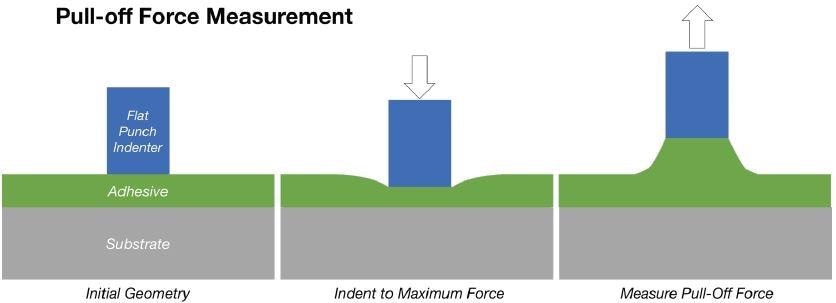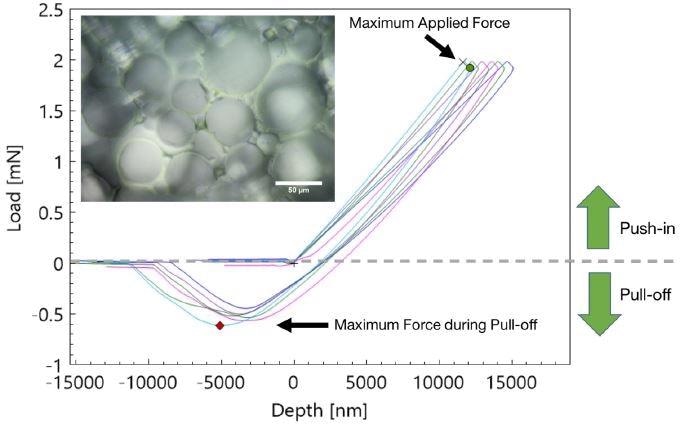Adhesive forces play an important role in everyday consumer goods. Whether the product is a shipping tape, memo note, or glue, the adhesive’s strength and longevity determine the end users’ experience.
This article describes the general test procedure for flat punch pull-off measurements, highlights the advantages of nanoindentation testing of adhesives, and demonstrates the measurement power of the iNano Nanoindenter for testing a double-sided adhesive tape, which is commercially available on the market.
Advantages of nanoindentation testing of adhesives over standard tests:
- Precise displacement measurements from nanometers to micrometers and accurate force application from micronewtons to millinewtons
- Complete control over hold periods, loading rates, and test parameters.
- Characterization of local microstructure over multiple length scales with varying punch diameters.
- Direct measurement of pull-off stress allows for quick sample characterization with minimal user bias
Materials and Methods
Figure 1 shows the general procedure used for measuring pull-off forces and displacements during an adhesion test. First, the indenter is allowed to contact the sample and is then pushed into the material at an applied loading rate. After achieving a maximum specified force, the indenter pulls away from the sample at a specified unloading rate. During this process, the nanoindenter continuously measures displacements and forces, and automatically marks the minima and maxima.
In this case, a cylindrical flat punch with a radius of 27 µm was employed to determine the local pull-off forces on a typical off-the-shelf double sided sticky tape. The tape was fixed to a glass slide that had been firmly bonded to an aluminum surface – a standard nanoindentation mount.

Figure 1. Pictorial representation of the pull-off force measurement test procedure. Initially, the indenter is brought into contact with the sample. The indenter is then pushed into the material at an applied loading rate. Once a maximum specified force has been achieved, the indenter pulls away from the sample at a prescribed unloading rate. The nanoindenter continuously measures forces and displacements during this process and automatically marks the maxima and minima.
Results and Discussion

Figure 2. Results from the adhesion testing with a cylindrical flat punch on a commercially available double-sided tape. Load-depth curves are generated and automatically analyzed with the iNano Nanoindenter. The unique microstructure of the sample is shown in the inset.
As the sample tested was a viscoelastic polymer, there was an expectation of rate dependent properties. The following results clearly point to a pull-off force dependent on loading rate. Local adhesive properties were probed by the iNano Nanoindenter.
Loading Rate
(mN/s) |
Pull-off Displacement
(μm) |
Pull-off Force
(mN) |
Pull-off Stress
(kPa) |
| 2.0 |
5.1 |
0.72 |
320 |
| 1.0 |
4.7 |
0.53 |
230 |
| 0.4 |
4.0 |
0.37 |
160 |

This information has been sourced, reviewed and adapted from materials provided by Nanomechanics, Inc., a KLA-Tencor company.
For more information on this source, please visit KLA.